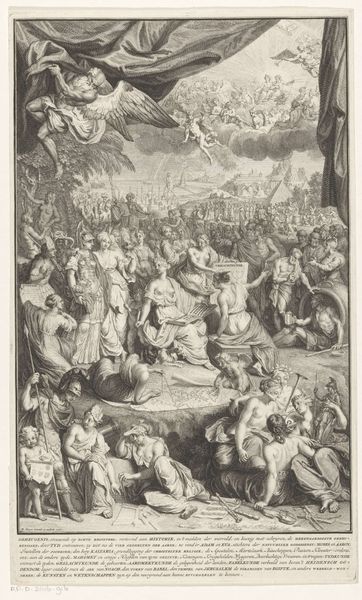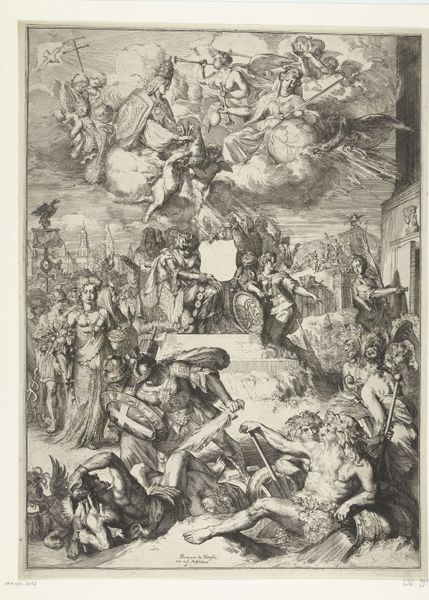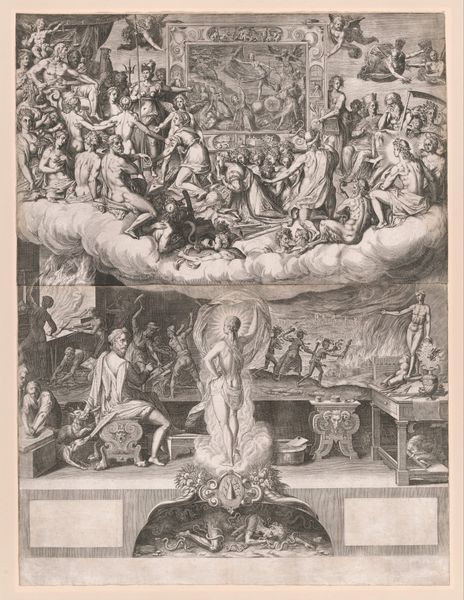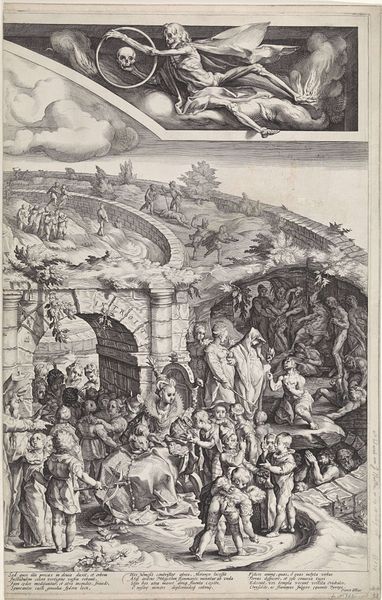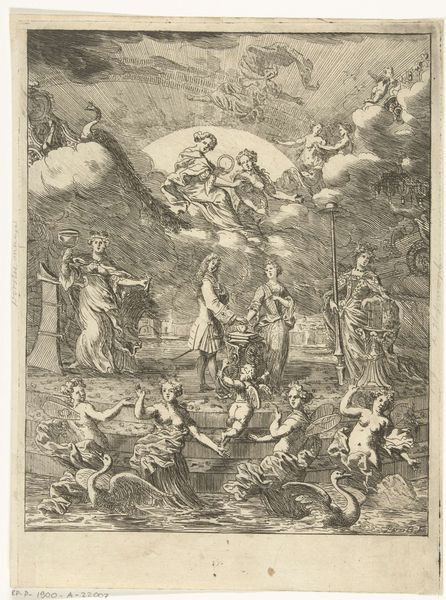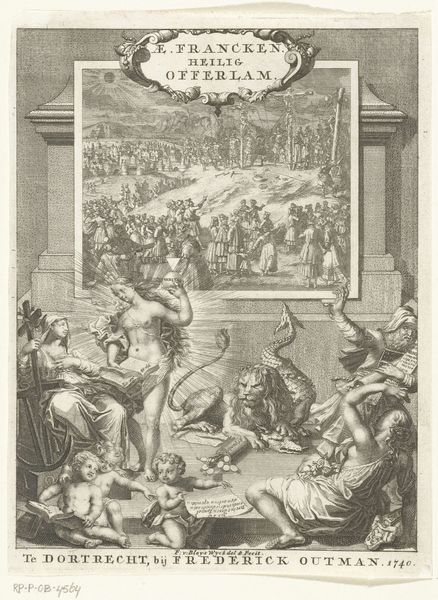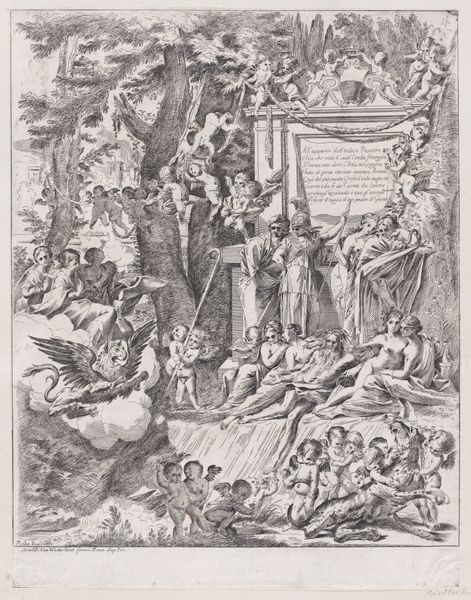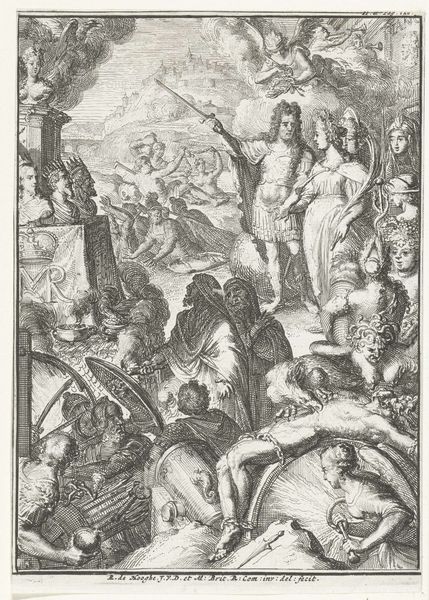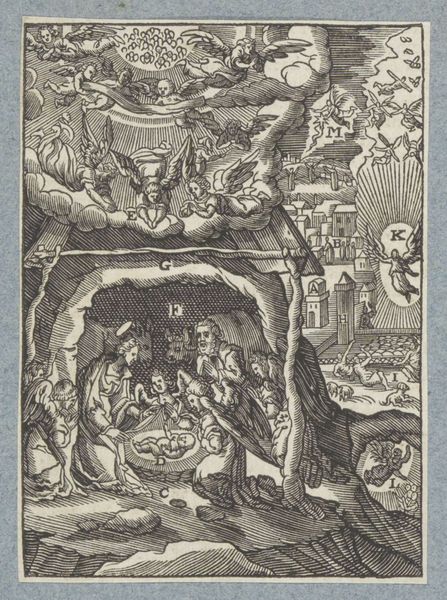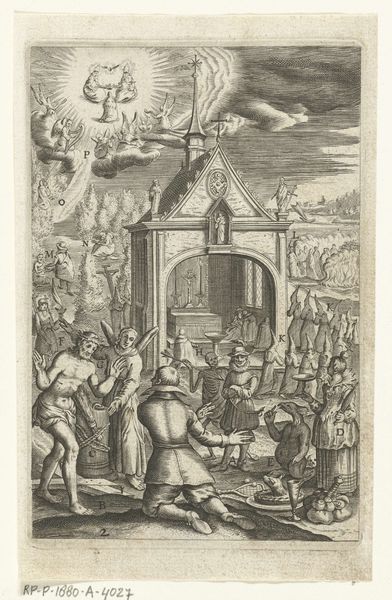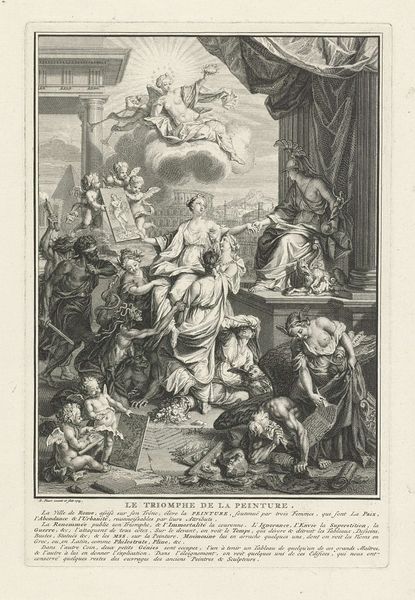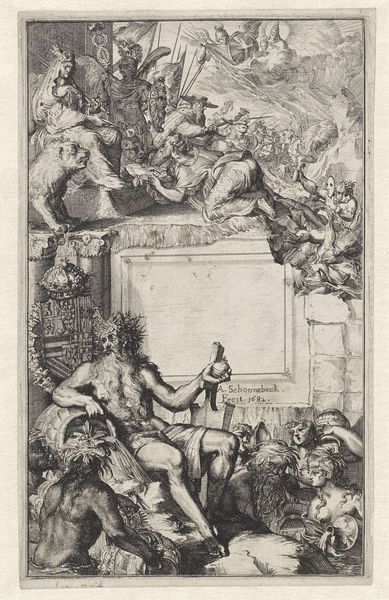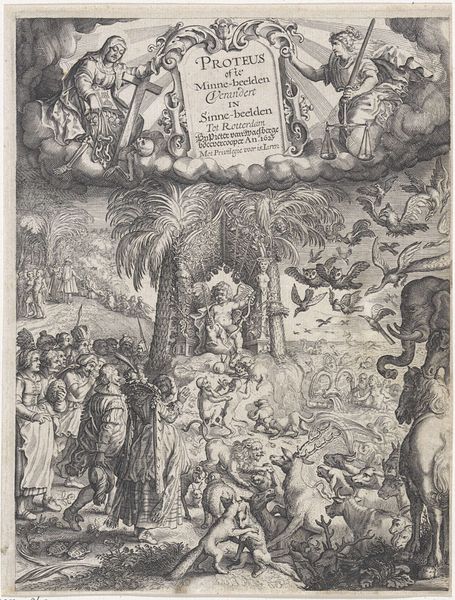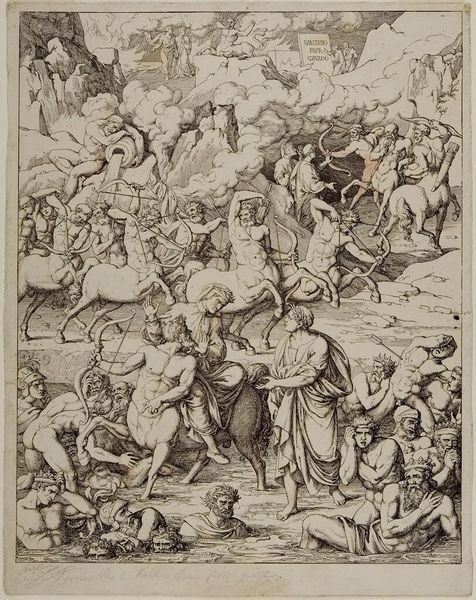
print, engraving
#
allegory
# print
#
figuration
#
line
#
history-painting
#
northern-renaissance
#
engraving
Dimensions: height 665 mm, width 417 mm
Copyright: Rijks Museum: Open Domain
Curator: What a compelling and intricate print. This is "Tabula Cebetis, linker blad" by Jacob Matham, created in 1592. It resides here at the Rijksmuseum. The medium is engraving. Editor: My initial impression is that this is a stark, moral landscape rendered in exquisite detail. The sheer density of figures pulls me in. I am interested in the materials used. What kind of labor went into its making? Curator: It is an allegorical scene, clearly designed to instruct the viewer. We see layers of symbolic spaces representing various stages and challenges in the pursuit of virtue and happiness. The engraving medium allowed for widespread dissemination of such moral teachings during that era. Editor: Considering its physical production, each of those exquisitely rendered lines, etched meticulously… it’s fascinating to imagine the artist’s hand, the repetitive motions, the laboriousness itself becoming a form of embodied virtue reflected in the final piece. What’s the relationship between the print medium and the notion of mass instruction it seems designed to provide? Curator: That is insightful. Prints such as these enabled ideas to circulate widely in society, embedding imagery into the collective psyche. You see repeated motifs of trials, gates, temptations and judgements. Think about the emotional impact as this image spread across different audiences. What stories might people have told looking at this print in their homes or workplaces? Editor: I imagine diverse responses contingent on access and social stratification, each colored by varied socio-economic standings that would make the message resonate distinctively among different societal factions. Is it meant to inspire piety, maintain hierarchy or invite reform? It certainly opens a door to understanding Dutch life in that period. Curator: It shows how social status may have affected one’s interpretation, or the impact, but the powerful use of repeated archetypes ensured cross-cultural understanding. Matham was quite strategic in translating abstract concepts of ethics and fulfillment. Editor: It is amazing to see the way process is intertwined with dissemination. Jacob Matham truly embodied the Protestant work ethic through this incredibly detailed print. The layers of figures are also fascinating when you consider their consumption: in how many different homes would this be on display? Curator: Exactly. The enduring relevance of virtue-based imagery testifies to how powerfully humans have communicated fundamental questions. Editor: Indeed, tracing the journey of ideas through their material form brings a new meaning to how this piece has moved through time.
Comments
No comments
Be the first to comment and join the conversation on the ultimate creative platform.
